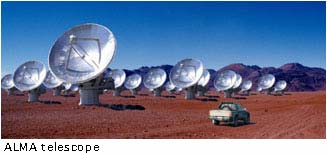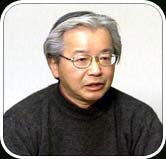 |


File size : 15.2MB
Format : MPEG |
|
Q. NAOJ has been involved in international collaboration, such as the ALMA project. What kind of expectations do foreign organizations have of Japan? What is the importance of joining international projects?
Frankly speaking, when it comes to international collaboration, Japan is still a young country. This is because Japan is behind in establishing the systems that are necessary for that purpose. Apart from language obstacles, the use of funds for such projects is limited. Besides budget shortages, there is no flexibility in planning the effective use of funds as projects make progress. The restrictions are pretty tight. This is the biggest problem for us when we have to compete or collaborate with countries that do have flexibility in that respect. Recently, privatization has become a big issue, and I’m hoping it will improve this situation.
As for expectations from overseas, they totally depend on how much outstanding work we can conduct. As long as we continue to carry out proper work, naturally people continue to build trust with us, and to collaborate as equals. ISAS’s satellite projects have already established relationships with the United States, Britain and Europe, for example, so they welcome Japan very much, and expect a contribution from us.
Speaking of trust, NAOJ has gained it from overseas as well, but there is a slight difference between the field of astronomy and ISAS. Space science originated with international collaboration. That is, international collaboration is inevitable in space science. Basically, we can study astronomy in each country without international collaboration, and then collaboration occurs according to necessity. For instance, a third of astronomers who come to NAOJ are from overseas. The observatory is open to the world, since good observations benefit us as well. The astronomers come to us because we have a high-quality telescope. The Subaru telescope, which is located in Hawaii, is the same. It was built in a foreign country, so we faced different difficulties than we did with Nobeyama, but anyway, it is a Japanese telescope, and of course, international collaboration is offered as needed.
However, ALMA is an interesting case. It’s a new step both for NAOJ and for science in general. As you know, there has been a lot of international collaboration in the world of science, but truly, there are very few projects with equal collaboration among countries. No matter where the satellite is from, ISAS or NASA, it belongs to the county where it’s launched. For instance, even though Europe has collaborated on NASA’s Hubble Space Telescope (HST), it is the United States’ HST. The States helped equip the ISAS solar satellite YOHKOH as well, but it is Japanese. ALMA, however, doesn’t belong to any country. It is literally the first world telescope, which is designed and managed as a collaboration between Europe, the United States and Japan.
 ALMA is actually based on Japan’s plan, developed from the Nobeyama Millimeter array telescope, and the United States and then Europe each proposed similar plans. Since our original ideas are the core, it’s not like we joined their existing project. As such, we are basically maintaining an equal relationship with them. Especially in radio-wave astronomy, Japan is the leading country in Millimeter array. I’m expecting the results of experiments under international collaboration will be really interesting. ALMA is actually based on Japan’s plan, developed from the Nobeyama Millimeter array telescope, and the United States and then Europe each proposed similar plans. Since our original ideas are the core, it’s not like we joined their existing project. As such, we are basically maintaining an equal relationship with them. Especially in radio-wave astronomy, Japan is the leading country in Millimeter array. I’m expecting the results of experiments under international collaboration will be really interesting.
|
 |
 |
 |


File size : 8MB
Format : MPEG |
|
As I said earlier, at first Japan was leading the ALMA project. But then Japan’s economy worsened. ALMA was scheduled to be built at that time, in 2002, but it was only the United States and Europe that got the budget. Fortunately, Japan can rejoin the project starting in 2004, but it leaves us two years behind. It would have been much smoother for us to be a part of the project from the start, since, after all, equality is really important in international collaboration.
In international collaboration, there are mutual expectations and cooperation, but there is definitely also fierce competition. This competitive collaboration cannot last without each country’s team having independence. The same is true of individuals. A marriage is a good example. When one is subordinate to the other, they are not truly a couple. A better relationship is established when two independent individuals cooperate. You can apply this to international collaboration as well. It is important to have a clear vision and the technology for the research you want to conduct, and also to make efforts to develop the technology. When all the originality is put together, equal collaboration is born. Only financial investments are not collaboration. If Japan had to contribute only money, its scientific research would collapse. Therefore, we put a high value on how much originality Japan can offer. As a result, Japan contributes to the world, and that helps us build good international relationships.
As for ALMA, I believe that Japan has established its position as an equal to the United States and Europe. The Nobeyama Radio Observatory has already made achievements; and in technology development, Japan is recognized for submillimeter array technology, precision engineering and information engineering. So although Japan’s participation was delayed for two years, the United States and Europe are really welcoming us. I believe it is very important to continue building these kinds of international relationships.
|
|
 |

